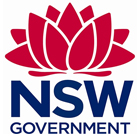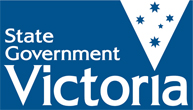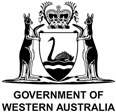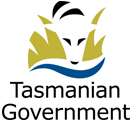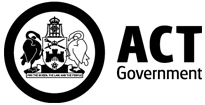(shiny)ssdtools software
“shinyssdtools” (Dalgarno 2021) is the approved software for deriving water quality guideline values for toxicants in Australia and New Zealand. It replaces the approved use of the Burrlioz 2.0 software.
shinyssdtools is a web-based application for deriving guideline values that employs the R statistical package “ssdtools” (Thorley and Schwarz 2018, Thorley et al. 2025). Either shinyssdtools or ssdtools can be used to derive guideline values. The term “(shiny)ssdtools” is used to refer collectively to both shinyssdtools and ssdtools.
(shiny)ssdtools should be used to derive default guideline values (DGVs) or site-specific guideline values, in conjunction with the derivation methodology using laboratory-effects data (Warne et al. 2025).
shinyssdtools and its user manual can be accessed for free at https://bcgov-env.shinyapps.io/ssdtools/.
Why has Burrlioz been replaced?
The species sensitivity distribution (SSD) modelling approach used by (shiny)ssdtools represents an improvement of that used by Burrlioz 2.0. While Burrlioz (1.0 and 2.0) provided a technically defensible approach to deriving toxicant guideline values for over 20 years, the transition to (shiny)ssdtools significantly strengthens the technical basis of toxicant guideline values for Australia and New Zealand (Fox et al. 2023) and ensures that the derivation method reflects the current state of the science for SSD modelling.
How it works
(shiny)ssdtools uses a technique known as model averaging. In the context of SSD modelling, the technique fits multiple distributions to the input toxicity dataset and uses the weights of the fits of each distribution to create a model-averaged SSD. From this, (shiny)ssdtools estimates the concentrations of a toxicant that would protect nominated percentages of species (level of protection) with median confidence (termed protective concentrations). The protective concentrations can then be assigned as guideline values, as required.
Unlike Burrlioz 2.0 and most other SSD modelling packages, (shiny)ssdtools does not rely on just a single distribution that may not provide an adequate representation of the dataset. Full statistical details of (shiny)ssdtools and model averaging in SSDs can be found in Thorley and Schwarz (2018), Schwarz and Tillmanns (2019), Fox et al. (2021, 2022, 2024a, b) and Thorley et al. (2025).
A toxicity dataset is uploaded to (shiny)ssdtools as a CSV (comma delimited values) file. This enables the toxicity data to be accompanied by matching metadata such as species name or taxonomic group, and the type of toxicity data, with these being displayed as symbols or labels on the plot.
Features of (shiny)ssdtools
- Reports:
- The concentration corresponding to the nominated level of species protection (i.e. a protective concentration).
- The fraction affected for a given concentration.
- 95% confidence limits (and a range of other statistics) for protective concentrations based on the model-averaged SSD.
- A range of statistics, including the weight, for each individual distribution used in the analysis.
- Shows the nominated level of species protection on the plot.
- Displays symbols or labels (e.g. for species or taxonomic groups) on the plot, and provides additional editing functionality (graphical SSD output shown in Figure 1).
- Enables download of a full report of the results and input data, in multiple file formats (termed a “BCANZ” report).
Figure 1 Example of (shiny)ssdtools graphical species sensitivity distribution output. The concentration for 95% level of species protection is indicated by the dotted line at the bottom of the curve.
Development of the software
ssdtools (version 1.2.0) and shinyssdtools (version 0.4.0) were developed by Thorley et al. (2015) and Dalgarno (2021), respectively, as a collaboration between the Australian, New Zealand, Canadian and British Columbian governments.
Ongoing maintenance and further development of (shiny)ssdtools is overseen by a technical committee with representatives from the above-listed jurisdictions.
More technical information on (shiny)ssdtools can be found in the following publications: Dalgarno (2021), Fox et al. (2021, 2022, 2023, 2024a, 2024b), Schwarz & Tillmanns (2019), and Thorley et al. (2025).
Implementation of (shiny)ssdtools
The governing committees for the Water Quality Guidelines agreed that retrospective use of (shiny)ssdtools for existing, published toxicant DGVs would not occur unless (i) there were deficiencies in the DGVs that were a direct result of the use of Burrlioz, and (ii) the use of shinyssdtools would result in DGVs with higher reliability and overall confidence. However, if an existing toxicant DGV is identified for revision, that revision will include the use of (shiny)ssdtools to derive the DGVs.
Implications for existing DGVs based on Burrlioz
It is important to note that published DGVs that were derived using Burrlioz remain valid and in place for use as ANZG DGVs.
References
Dalgarno S 2021. shinyssdtools: A web application for fitting Species Sensitivity Distributions (SSDs). Journal of Open Source Software, 6(57), 2848, https://doi.org/10.21105/joss.02848.
Fox DR, van Dam RA, Fisher R, Batley GE, Tillmans AR, Thorley J, Schwarz CJ, Spry DJ & McTavish K 2021. Recent developments in species sensitivity distribution modeling. Environ. Toxicol. Chem. 40, 293-308.
Fox DR, Fisher R, Thorley JL & Schwarz C 2022. Joint Investigation into statistical methodologies underpinning the derivation of toxicant guideline values in Australia and New Zealand. Report prepared for the Department of Agriculture, Water and the Environment. Environmetrics Australia, Beaumaris, Vic and the Australian Institute of Marine Science, Perth, WA.
Fox D, van Dam R, Batley G, Fisher R & Thorley J 2023. Improved SSD software coming soon for the ANZG Guidelines. Australasian Bulletin of Ecotoxicology and Environmental Chemistry 9, 1-3.
Fox DR, Fisher R & Thorley JL 2024a. Final report of the joint investigation into SSD modelling and ssdtools implementation for the derivation of toxicant guidelines values in Australia and New Zealand. Report prepared for the Department of Climate Change, Energy, the Environment and Water. Environmetrics Australia, Beaumaris, Vic and the Australian Institute of Marine Science, Perth, WA. (183 pp). doi 10.25845/xtvt-yc51.
Fox DR, Fisher R & Thorley JL 2024b. Sample size investigations for uni-modal and bi-modal distributions in ssdtools. Addendum to: Final report of the joint investigation into SSD modelling and ssdtools implementation for the derivation of toxicant guidelines values in Australia and New Zealand. Report prepared for the Department of Climate Change, Energy, the Environment and Water. Environmetrics Australia, Beaumaris, Vic and the Australian Institute of Marine Science, Perth, WA..
Schwarz CJ & Tillmanns AR 2019. Improving statistical methods to derive species sensitivity distributions. Water Science Series, WSS2019‐07, Province of British Columbia, Victoria, BC, Canada.
Thorley J, Fisher R, Fox D & Schwarz C 2025. Ssdtools v2: An R package to fit Species Sensitivity Distributions. J. Open Source Softw., 10(105), 7492. https://doi.org/10.21105/joss.07492.
Warne MStJ, Batley GE, van Dam RA, Chapman JC, Fox DR, Hickey CW, Stauber JL & Fisher R 2025. Method for deriving Australian and New Zealand water quality guideline values for protecting aquatic ecosystems from toxicants – update of 2018 version. Prepared for the revision of the Australian and New Zealand Guidelines for Fresh and Marine Water Quality. Australian and New Zealand Governments and Australian state and territory governments, Canberra.


